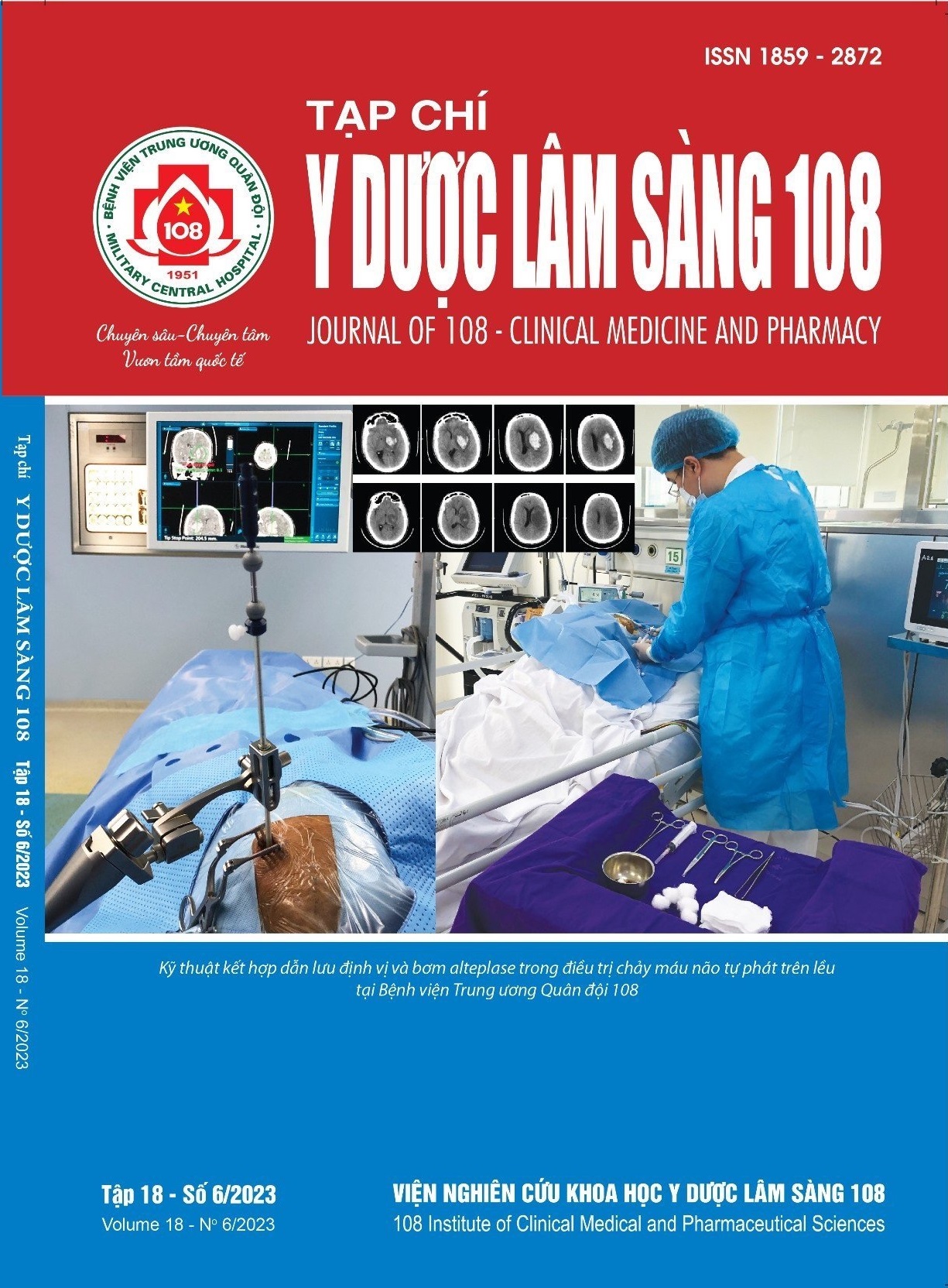The association between anti-U1-RNP antibody with pulmonary arterial pressure and interstitial lung disease in patients with systemic scleroderma
Main Article Content
Keywords
Abstract
Objective: To evaluate the association between anti U1-RNP antibody with pulmonary arterial pressure and interstitial lung disease in patients with systemic scleroderma. Subject and method: A cross-sectional descriptive study was conducted on 55 patients with definitive diagnosis of systemic scleroderma according to the criteria of the American Society of Rheumatology (ACR) and the European Society of Anti-rheumatic Diseases (2013) at the National Hospital of Dermatology and Venereology from September 2021 to September 2022 and was tested to detect anti-U1-RNP antibodies in the blood using the ANA 23 profile test kit. Result: Among 55 patients participating in our study, 70.9% of patients were female. The mean age of onset was 49.8 ± 12.3 years old. The positive rate of anti U1-RNP antibody was 14.5% and mainly positive at levels 2+ and 3+ (37.5%). The rate of pulmonary arterial hypertension was 40.7%, of which the anti-U1-RNP positive group (85.7%) was higher than the negative group (34.0%) (p=0.014). The mean pulmonary artery pressure was 31.8 ± 9.5mmHg, the anti U1-RNP positive group (36.6 ± 3.6) was higher than the negative group (29.9 ± 9.1) (p=0.002). In addition, the rate of interstitial lung disease detected by high-resolution computed tomography in patients with systemic scleroderma was 55.6%, but there was no difference between two groups of patients with systemic scleroderma positive and negative with anti U1-RNP. Conclusion: In our study, patients with systemic scleroderma who were positive for anti U1-RNP have higher tendency for pulmonary arterial hypertension and interstitial lung disease on high-resolution computed tomography than the negative group.
Article Details
References
2. Thân Trọng Tuỳ (2014) Đánh giá hiệu quả điều trị bệnh xơ cứng bì hệ thống bằng methotrexate. Luận văn Thạc sĩ Y học chuyên ngành Da liễu, Trường Đại học Y Hà Nội, Hà Nội.
3. Bunn CC, Denton CP, Shi-Wen X, Knight C, Black CM (1998) Anti-RNA polymerases and other autoantibody specificities in systemic sclerosis. Br J Rheumatol 37(1): 15-20. doi: 10.1093/ rheumatology/37.1.15.
4. Wu W, Hoederath P, Hachulla E, Airò P, Valentini G, Matucci Cerinic M, Cozzi F, Riemekasten G, Allanore Y, Carreira P, Jordan S, Distler O (2018) Demographic and clinical features of systemic sclerosis patients with Anti-U1RNP antibodies: A European Scleroderma Trials and Research (EUSTAR) Analysis. ACR Meeting Abstracts.
5. Mulhearn B, Tansley SL, McHugh NJ (2020) Autoantibodies in connective tissue disease. Best Pract Res Clin Rheumatol 34(1): 101462. doi: 10.1016/j.berh.2019.101462.
6. Kuwana M, Kaburaki J, Okano Y, Tojo T, Homma M (1994) Clinical and prognostic associations based on serum antinuclear antibodies in japanese patients with systemic sclerosis. Arthritis & Rheumatism 37(1): 75-83. doi:10.1002/art.1780370111.
7. Walker UA, Tyndall A, Czirják L et al (2007) Clinical risk assessment of organ manifestations in systemic sclerosis: a report from the EULAR Scleroderma Trials And Research group database. Ann Rheum Dis 66(6): 754-763. doi: 10.1136/ard.2006.062901.
 ISSN: 1859 - 2872
ISSN: 1859 - 2872
